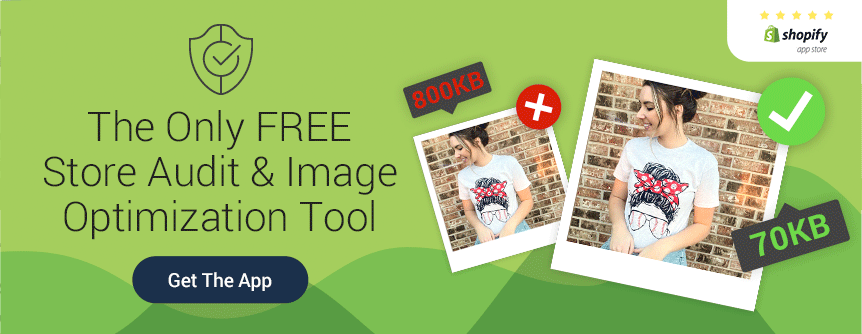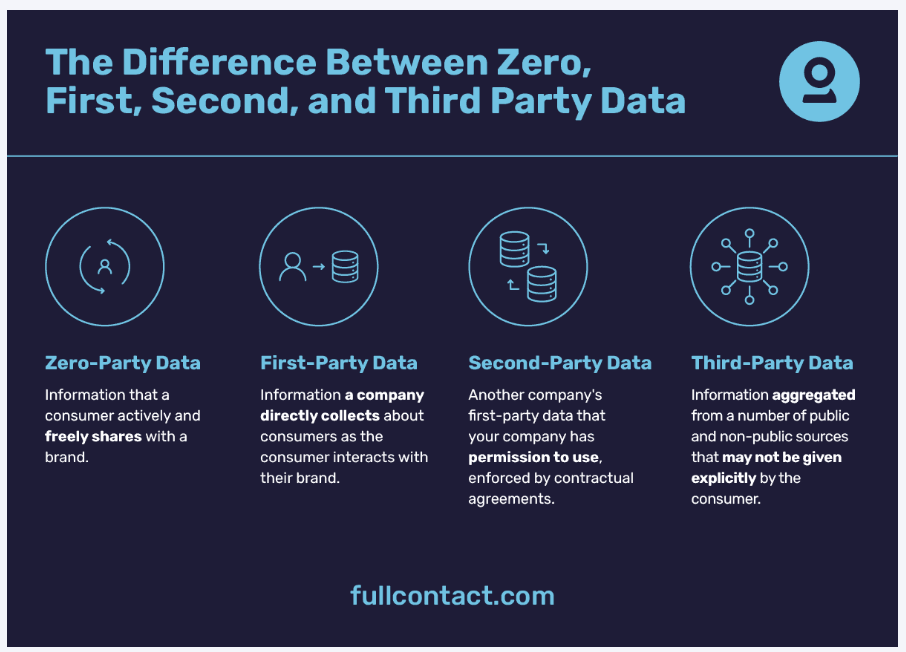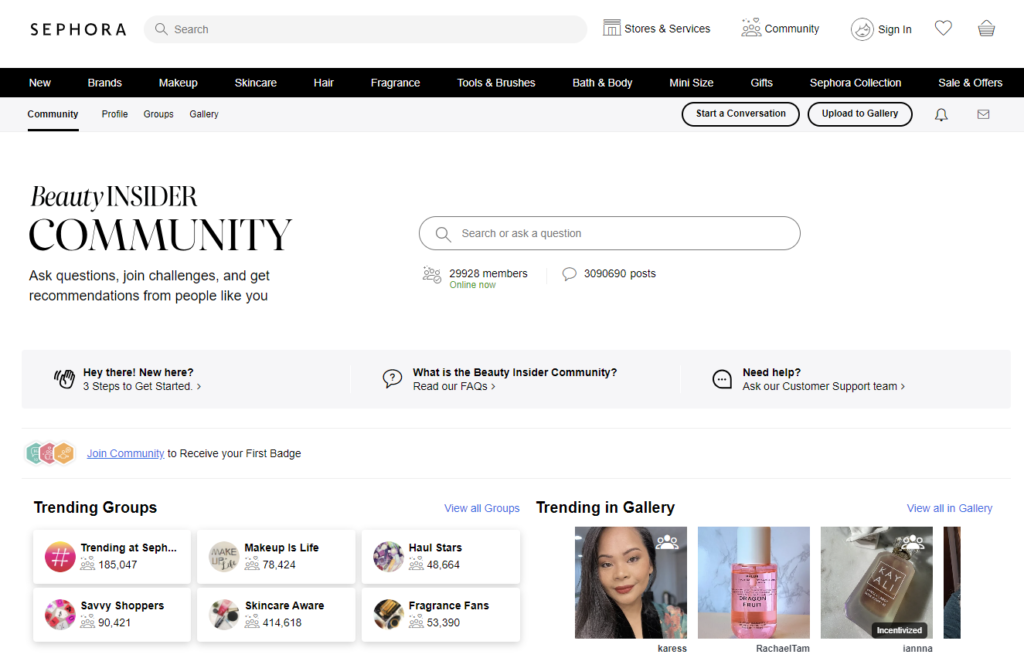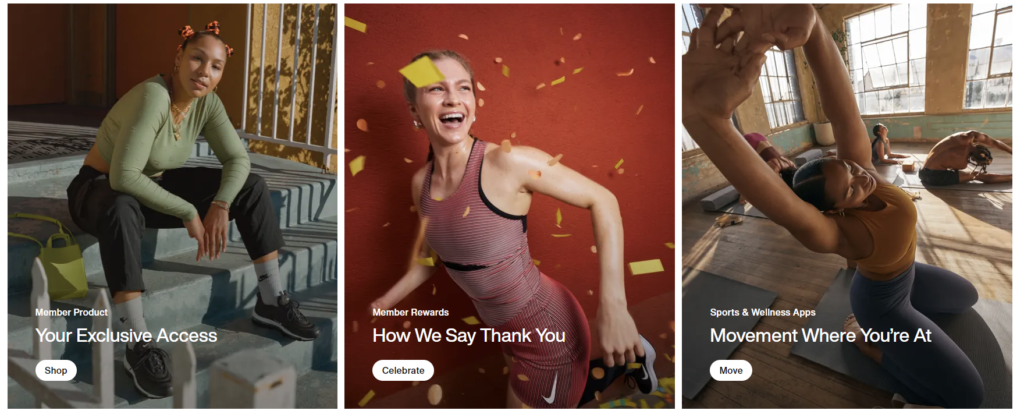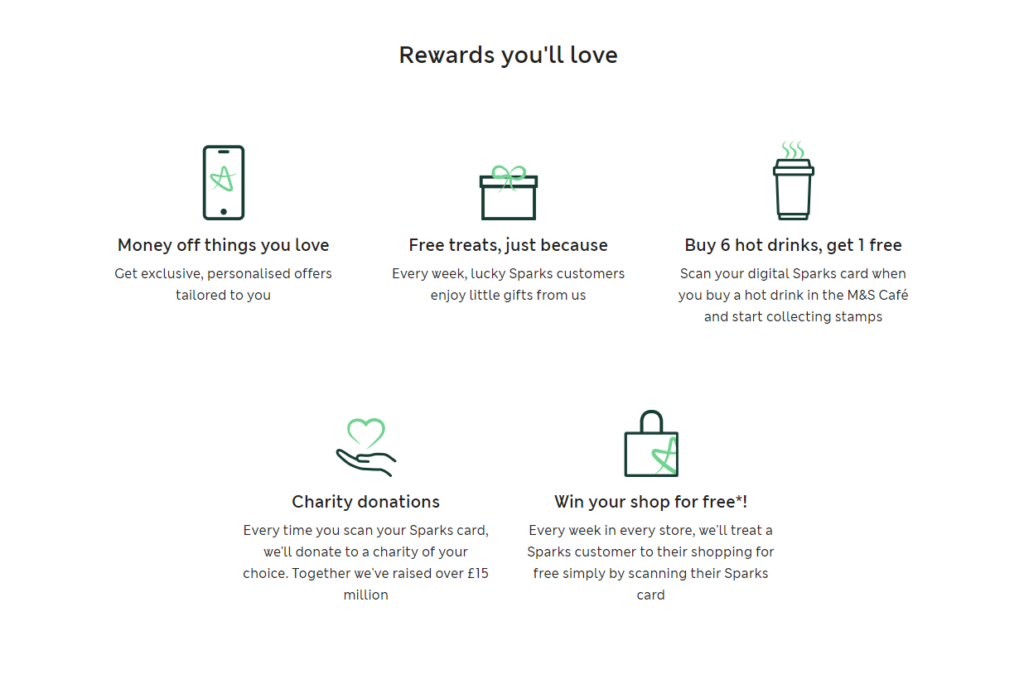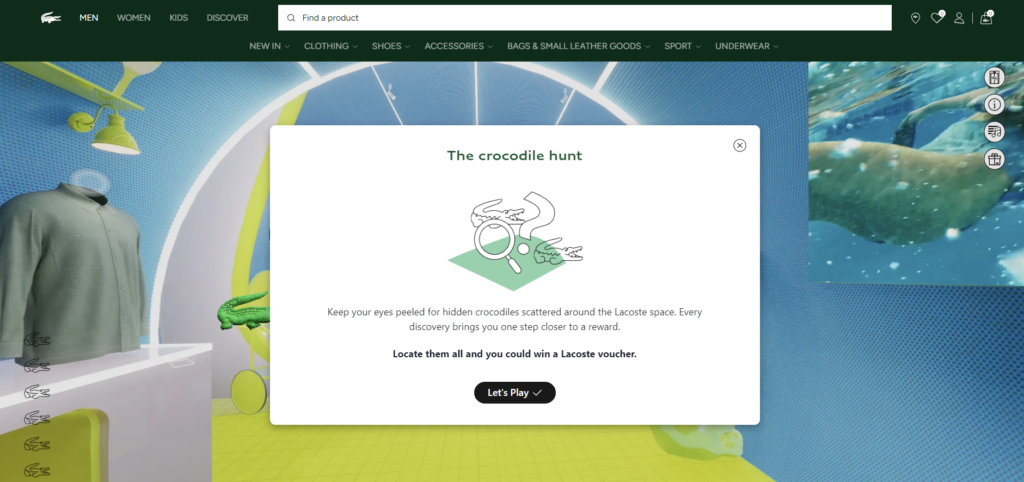While eCommerce brands increasingly rely on data-driven strategies, ways to access quality customer data are shrinking. This means looking for innovative ways to overcome eCommerce data collection restrictions.
This poses a significant challenge:
- As privacy regulations and platform policies limit some customer data collection, how can you ensure a steady flow of high-quality customer data and achieve more effective eCommerce marketing results?
This post answers that question, and more!
Here’s what we cover:
- Understanding the data privacy landscape
- Important ethical considerations for collecting data
- 4 Innovative solutions to eCommerce data collection challenges [+strategies]
- Final thoughts: The future of eCommerce data collection
Grab that coffee, and let’s jump in.
Understanding the Data Privacy Landscape
There are two main data protection regulations and laws that got the ball rolling in terms of data privacy. They are the:
- GDPR (General Data Protection Regulation). This law requires businesses to protect EU citizens’ privacy and personal data.
- CCPA (California Consumer Privacy Act). This law was passed in California and affords residents the rights to their personal data.
However, there has also been an increase in data global regulations, which now include Brazil’s LGPD, Canada’s PIPEDA, and Australia’s Privacy Act, with Gartner predicting that as much 75% of the world’s population will have their personal data covered under modern privacy regulations by the end of this year.
These regulations don’t just put a limit on how much data can be collected but on how marketers and brands can use it.
Add to that an increased customer awareness in terms of data privacy rights, shoppers are now far more likely to be opting out of eCommerce data collection.
And when you consider only a small percentage of Americans feel they have “a lot of” control over how their data is collected and used — a sentiment driving more opt-out mechanisms — the time to protect your business against these fluctuations is now.
Therefore, it shouldn’t surprise you that 96% of organizations recognize data privacy as not just a compliance requirement but a business imperative.
But what does this mean for eCommerce business, specifically?
How Reduced Customer Data and Data Restrictions Are Affecting Online Stores
- Additional compliance costs. Becoming compliant for eCommerce businesses operating within countries with new restrictions can be costly. For instance, as of 2023, the cost of achieving GDPR for medium businesses in the EU could be anywhere between $100,000 up to $500,000. GDPR-compliant stores also saw 72% in data subject requests (whereby customers request what data you have of theirs, increasing administrative burdens and costs).
- Less access to customer data. As more countries request opt-in consent models, more customers are opting out of eCommerce data collection. This means decreased opportunities for online stores to re-engage with potential customers through direct marketing.
- Decreased marketing ROAS. Businesses that don’t have strategies in place to prepare for restricted data are seeing a drop in their marketing results. According to Secure Privacy and Pew Research Center, half of eCommerce businesses reported a significant impact on their marketing efforts when they had to overhaul their data collection and consent mechanisms to comply with CCPA’s requirements. And as we know — decreased marketing results for more spend equals worsening ROAS.
So, what can you do to navigate the increased restrictions that affect results, data availability, and costs? Strategies to come!
But first, let’s quickly look at some essential ethical data collection considerations.
Important Ethical Considerations for Collecting Data
In today’s world of data scarcity and customer awareness, keeping these three ethical data collection considerations in mind is important — even if you are working with zero-party customer data!
eCommerce Data Collection Rule #1: Absolute Transparency
Customers are more likely to engage with a brand they believe handles their data responsibly.
Therefore, when it comes to customer data collection, transparency with your shoppers is vital if you want their buy-in.
It also goes a long way toward building trust and fostering loyalty, while ensuring you are in full compliance with data privacy regulations — reducing the risk of legal issues and enhancing the overall customer experience.
You can ensure absolute transparency by:
- Clearly and truthfully communicating how you collect, use, and protect customer data through your terms and conditions and privacy policies
- Always providing easy options for customers to opt in or out of data collection
eCommerce Data Collection Rule #2: Total Security
Another must when it comes to data collection is security.
Ensuring data security is crucial for any eCommerce business. You have to protect sensitive customer information from breaches and cyberattacks, which could result in significant brand damage and additional business costs.
Data security also goes a long way to building customer trust and confidence, as customers are more likely to engage with and make purchases from a brand that effectively safeguards their personal data.
Here are two ways you can ensure data security:
- Having strong encryption and security protocols in place to protect customer data
- Doing regular data audits to ensure compliance with privacy regulations and looking for any security weaknesses
For Shopify stores, you already benefit from strong encryption and security protocols, including SSL encryption and additional security measures to protect customer data. But you want to invest in the “bells and whistles,” such as fraud protections, to be truly secure.
eCommerce Data Collection Rule #2: Full Respect for Preferences
Regardless of what strategy you implement, respecting your customer’s preferences is a definite must.
On the surface, this leads to more brand trust and stronger customer relationships. On a deeper level, your shoppers will be more likely to engage with you and remain fiercely loyal to your brand.
By not honoring a customer’s preferences, you not only risk product sales and brand reputation. You risk not being in compliance with privacy regulations, which could spell legal issues (and costs) and potential fines.
You can ensure full respect for customer preferences by:
- Making sure you balance personalized marketing with respect for customer privacy
- Having sound feedback mechanisms in place that allow customers to provide feedback on data usage and marketing practices.
—
Now, let’s look at the four main ways an eCommerce store can overcome data collection constraints while significantly boosting marketing results as well.
4 Innovative Solutions to eCommerce Data Collection Challenges [+ Advanced Strategies]
In this section, we discuss the four main ways you work around lessening customer data and any adverse effects of data restrictions. These include:
- Upgrading and Fine-Tuning Your Data Collection Methods
- Enhancing Your Customer Segmentation and Personalization
- Focusing on Incentivized Data-Sharing Strategies
- Investing Big in Customer Experience
Plus, for each solution, you get practical hacks, tips, and strategies to not only survive data-growing restrictions, but thrive regardless of them.
Let’s jump in.
1. Upgrading and Fine-Tuning Your eCommerce Data Collection Methods
To effectively navigate the tightening restrictions on customer data, start by ensuring that your data collection methods are both accurate and comprehensive. This forms the foundation for effective marketing strategies and customer engagement.
But remember, we want quality, not quantity. You are looking for more of both zero-party data and first-party data.
What Is First-Party Data?
Because first-party data is collected directly from your customers via interactions on your website, apps, social media, and other owned platforms, it tends to be more reliable and relevant.
Here’s a quick review of the types and how they differ:
[Source: FullContact]
In short, first-party data is gathered with consent, offering a clear view of customer behaviors, preferences, and brand engagements.
Here are four main ways you can upgrade and fine-tune your eCommerce data collection so that they not only comply with privacy regulations but maximize the value of the data you are collecting.
Data Collection Optimization Hack #1: Boost Zero-Party Data Strategies
Because zero-party data is collected with explicit customer consent, it directly addresses data privacy regulations like GDPR and CCPA — thus reducing the risk of non-compliance and the associated penalties.
It also goes a long way to building authentic, long-lasting brand loyalty and trust.
By collecting data that is voluntarily provided by your customers, you build transparency and trust. This mitigates the impact of data privacy laws that restrict third-party data usage and enhances customer loyalty.
This kind of data also enables you to build more-effective strategies based on more-accurate data, which can then be used for strategies such as targeted marketing campaigns, personalized product recommendations, and customized content and products.
Here are some strategies you can use to collect good-quality, zero-party data:
- Surveys and quizzes
- Customer preference centers
- Loyalty program engagement
- Interactive content, such as polls and feedback forms
Sephora is a prime example of a brand excelling at zero-party data collection strategies.
Their Beauty Insider program allows customers to voluntarily provide their beauty preferences and purchase intentions in exchange for personalized product recommendations and exclusive offers. It also keeps their communities on-store and off social media, giving them more ownership of their audiences.
[Source: Sephora]
Data Collection Optimization Hack #2: Implementing CDPs (Customer Data Platforms)
Because CDPs gather and consolidate data from multiple touchpoints into a unified customer profile, they might be worth investing in. Some CDP apps and tools include:
- Segment
- Lexer
- BlueConic
Here’s how they work:
CDPs seamlessly integrate with your tech stack — which includes eCommerce platforms, CRMs, and marketing tools — to capture and make all customer interactions available in real-time.
This means you have a more comprehensive understanding of customer behavior that you can use to drive more precise customer segmentation, better-tailored marketing initiatives, and enhanced decision-making.
And by centralizing zero or first-party data, CDPs help ensure compliance with data privacy regulations and reduce reliance on third-party data, which:
- Enhances data accuracy and builds trust with customers
- Leads to better marketing outcomes and higher customer loyalty
Data Collection Optimization Hack #3: Using GA4’s eCommerce Tracking to Create Detailed Customer Journey Maps
Yes, GA4 offers detailed insights into how customers interact with your store — capturing data on product impressions, clicks, add-to-cart events, and purchases — but many eCommerce brands aren’t using it to its full potential.
When used correctly, however, you get more quality data that you can use to optimize the shopping experience, tailor marketing strategies, and ultimately increase conversions.
To ensure you are getting the most out of it, you want to completely map your customer journey using GA4’s Enhanced eCommerce Tracking. This lets you identify key touchpoints and pain points in the buying process.
It also supports cross-device tracking and integrates seamlessly with other Google tools, providing a holistic view of customer behavior.
Here’s how you can implement GA4 mapping:
- Identify and define critical touchpoints in your customer’s journey, such as landing pages, product views, cart additions, and purchase completions
- Use Google Tag Manager or integrate an event tracking code on your site to capture detailed interactions at each touchpoint
- Analyze collected data via GA4’s reporting tools to identify patterns and pinpoint where customers disengage or convert
- Optimize the customer journey based on analysis, such as enhancing product page content, streamlining checkout processes, or tailoring marketing messages
Data Collection Optimization Hack #4: Optimize Your Customer Feedback Mechanisms
Another way you can tweak your eCommerce data collection methods is by tweaking your customer feedback strategies and tools.
By investing in a more advanced survey tool or feedback widget (such as SurveyMonkey, or Hotjar) across your marketing channels and on-store, you can better collect direct insights from customers at various touchpoints. This includes anything from post-purchase surveys to email questionnaires.
And why is this so important?
You want to prioritize data collected through direct customer feedback to minimize reliance on third-party sources and to comply with privacy regulations.
This strategy not only boosts data integrity but also fosters trust, as customers are informed about and engaged in the data-gathering process.
Here are four ways you can collect real-time customer feedback for your online store:
- Implement live chat tools to instantly interact with customers and gather feedback during their site visits
- Activate exit-intent pop-ups to launch surveys as customers prepare to leave your site
- Integrate feedback widgets within your app or website for direct user responses
- Use social media monitoring tools to track and engage with customer feedback across platforms
2. Enhancing Your Customer Segmentation and Personalization
With data becoming increasingly valuable, you need to ensure that you are using it to tailor messaging to each shopper as much as possible.
This means leveraging advanced analytics to create detailed customer segments based on behavior, preferences, and purchase history.
Then use this segmentation to deliver highly personalized experiences, such as tailored product recommendations, targeted email campaigns, dynamic ads, and customized website content.
Essentially, this enables you to harvest even more detailed data, which allows for a deeper understanding of customer needs and preferences — which can significantly improve engagement and conversion rates.
In the long run, personalization driven by zero or first-party data builds stronger customer relationships and loyalty, mitigating the impact of limited third-party data.
A good example of this in practice is Nike’s personalized marketing strategy. Here they leverage data from their apps and loyalty programs to deliver personalized product recommendations and exclusive offers.
Additionally, the Nike+ loyalty program gathers insights from customer interactions to refine and target marketing efforts, ensuring that each customer receives relevant and engaging content tailored to their specific needs and interests.
[Source: Nike]
But that is not to say you need Nike’s mega-budget to reap the benefits of segmentation and personalization.
Here are two advanced segmentation hacks and tactics using eCommerce AI that you can test for your store.
Segmentation and Personalization Hack #1: Investing in Predictive Analytics
When it comes to eCommerce personalization, you have to consider more than just real-time wants and needs. You need a way to use desires to predict and plan for future customer behaviors.
This is where predictive analytics comes into play.
By harnessing the power of predictive analytics tools like Salesforce Einstein or SAS Customer Intelligence 360, you can anticipate customer behaviors based on past interactions and demographic data.
The idea is to use machine learning models to pinpoint invaluable customer segments, like frequent buyers or those especially responsive to specific promotions. These insights are then integrated into your marketing automation platforms to tailor your campaigns proactively, which enhances engagement and retention.
This allows you to create dynamic segments that evolve with customer behavior to ensure your marketing efforts are always relevant and timely, significantly improving conversion rates and long-term customer retention.
And how does this help you overcome customer data restrictions?
Leveraging predictive analytics for segmentation and personalization can offer several advantages in mitigating the effects of increased data restrictions. Some advantages are:
- Unlike traditional reactive strategies that only address immediate customer needs, predictive analytics allows you to foresee future behaviors. This foresight enables you to plan and execute proactive marketing campaigns that are not only reactive but also proactive against any fluctuations new regulations bring.
- Predictive analytics primarily utilizes first-party data, which is data collected directly from your customers through their interactions with your brand. Since it’s gathered with customer consent, this type of data is more reliable and accurate while also ensuring you comply with strict privacy regulations.
- Predictive analytics enables you to create dynamic customer segments that adapt based on evolving customer behaviors. This dynamic segmentation helps anticipate changes in customer preferences, which can be crucial for maintaining relevance under restrictive data environments.
- By focusing on predictive models that use existing first-party data, your segmentation strategy becomes less vulnerable to external changes, such as tighter data privacy regulations. This built-in resilience makes it easier to adapt to new laws without significant disruptions to your marketing efforts.
- By integrating predictive insights into your marketing automation strategies, you can create more-tailored campaigns. This maximizes resource efficiency and enhances customer experiences, leading to better engagement and retention.
Segmentation and Personalization Hack #2: Implement Behavioral Email Targeting
Another way to leverage your zero and first-party data is through behavioral email targeting.
This means opting for a more robust email platform like Klaviyo or ActiveCampaign that enables you to send hyper-personalized emails based on specific customer actions and behaviors.
You then set up automated email campaigns that are triggered by very specific behaviors, like the ones you would use for abandoned cart emails.
Behavioral email targeting helps mitigate the impact of tighter data restrictions in several key ways:
- By focusing on zero and first-party data through personalized email marketing, you can leverage the information that customers have directly interacted with or provided to your business. As this method is generally more transparent and consent-based, this ensures you comply with privacy laws.
- By setting up automated campaigns triggered by very customer-focused, specific actions, you keep marketing messages relevant and timely. This approach maximizes the impact of each communication, encouraging conversions by addressing the customer’s immediate needs or interests — fundamentally offsetting the drops in performance that some brands are seeing from new regulations.
- By investing in more-sophisticated email platforms, you can take advantage of advanced features to personalize emails based on specific customer behaviors. This means that each email sent is highly relevant to the recipient, increasing the likelihood of engagement and deliverability without relying on broader, less secure third-party data.
Overall, these emailers enable you to turn data restriction limitations into an opportunity to refine marketing tactics, focusing on quality interactions rather than quantity, thus maintaining efficacy in a more regulated data environment.
Here are some advanced automated emails you can send using personalized and highly segmented audiences:
- Post-purchase up-sell emails. Initiate an email campaign after a purchase, suggesting products that complement what was bought. For example, following the purchase of running shoes, recommend socks, insoles, or athletic wear.
- Replenishment reminders. Configure automated emails to prompt customers when it’s time to refill or replace consumable products they’ve bought. For example, send a reminder email 25 days after a customer purchases a 30-day supply of vitamins, encouraging a reorder.
- Engagement-based re-engagement emails. Deploy emails to re-engage customers based on their interaction patterns, such as once-active customers who haven’t interacted with your site or emails for a while. Offer personalized content or exclusive deals to draw them back.
- Browsing behavior-triggered emails. Send personalized emails that align with a customer’s browsing habits on your site. For instance, if someone frequently views products in a specific category, email them about popular items or promotions within that category.
3. Focusing on Incentivized Data-Sharing Strategies
Consumers are so used to brands just taking, that when it comes to customer data, giving a little something back can go a long way. This is why robust loyalty programs that encourage customers to share their data in exchange for rewards, exclusive offers, and personalized services can be hugely successful.
Remember that Sephora example we discussed earlier? They built a whole community to encourage customer engagement.
Loyalty programs incentivize customers to willingly share their data, which is crucial in an era of increasing data restrictions. This approach not only enhances data quality but also strengthens customer loyalty and retention by offering tangible benefits in return for data sharing.
Let’s look at some advanced, incentivized data strategies to test for your eCommerce business.
Incentivized Data Strategy #1: Tiered Loyalty Programs with Personalization
A tiered loyalty program is a structured rewards system where customers earn progressively more valuable rewards as they reach higher levels of spending or engagement with a brand. This strategy takes that one step further by personalizing the rewards and experiences as customers progress through different levels.
You can use data collected through the program to tailor rewards even further, offering exclusive access to new products, personalized discounts, and invitations to VIP events.
This not only helps you create a deeper sense of engagement while rewarding customer loyalty, but it also incentivizes customers to share their data willingly, enabling you to build a comprehensive database of zero and first-party data and reducing reliance on third-party sources.
Let’s say you’re an online apparel retailer. You could use AI to analyze customer data and predict which rewards will most effectively drive engagement and retention for each tier.
The AI could then, in theory, identify that sportswear enthusiasts value early access to new collections and personalized fitness recommendations. Or that high-end fashion shoppers prefer exclusive discounts and VIP event invitations.
This targeted approach ensures that each customer segment receives rewards that are most relevant to them, enhancing their loyalty and engagement.
Bonus Content: AI for eCommerce: The Ultimate Guide
The UK brand Marks and Spencer is an expert at tiered, personalized loyalty programs. With their M&S Sparks, they offer tailored deals, instant rewards, and the opportunity for customers to support various charities based on their preferences and past purchase behaviors.
Members also receive personalized thank you gifts, priority access to sales, and the ability to earn points (“Sparks”) through the M&S mobile app!
[Source: M&S]
Incentivized Data Strategy #2: Gamified Data Collection
Another way you can incentivize customers is with gamified data collection.
Gamified data collection involves using interactive elements, such as points, badges, and leaderboards, to encourage your customers to share information willingly.
This method makes data collection more interactive and enjoyable, increasing participation and the quality of the data collected.
Therefore, be sure to include interactive quizzes, challenges, or social media contests that collect valuable insights while engaging customers. Or add a leaderboard for top shoppers like the Starbucks Rewards program. Or incorporate a scavenger hunt into your virtual store like Lacoste does.
[Source: Lacoste]
The trick is finding just the right gamification strategy that works to get your specific customers engaged. It also needs to match your budget. For instance:
- For those of you looking to upgrade existing strategies to something more advanced, you could integrate gamification with behavioral data analysis to offer personalized game experiences that adapt to each customer’s preferences and past behaviors.
- For those with smaller budgets or just starting out, simple tools like Google Forms or Typeform can be used to create engaging quizzes and surveys that reward customers with small discounts or exclusive content for their participation. This low-cost approach still effectively gathers valuable zero-party data while keeping customers engaged.
4. Investing Big in Customer Experience
Investing in your CX (eCommerce customer experience) is more crucial than ever, especially if you want to overcome data collection challenges and boost marketing results.
This is because a better CX means you can build stronger customer relationships, ensuring you collect valuable first-party and zero-party data while boosting engagement and marketing results in a privacy-conscious landscape.
Let’s discuss some advanced strategies for elevating your customer experience while mitigating the negative effects of data regulations.
Customer Experience Optimization Strategy #1: Automated PPC and Digital Ads for Personalization
By focusing on first-party data and customer-provided preferences, automated PPC and digital ads help ensure compliance with data privacy laws while maintaining effective personalization. They also ensure that your marketing efforts are precisely targeted and highly relevant to your target audience, improving CTRs and conversion rates — and ROAS, overall.
To implement this strategy, you must first set up the right automation tools. You can do this on each platform by embracing tools like Google Ads’ automated bidding strategies and Facebook Dynamic Product Ads.
Or, you can invest in an eCommerce-forward PPC platform like Traffic Booster to manage and optimize your ad campaigns automatically. Here’s how it works.
Once automation and personalization campaigns are in place, you should use them to harvest more valuable data, which can be used to further optimize and personalize your campaigns for better performance. It also ensures that you continuously comply with data privacy regulations by focusing on first-party data.
Customer Experience Optimization Strategy #2: Omnichannel Orchestration and Personalization
Next on your CX-optimization to-do list should be creating a more unified omnichannel customer experience.
This means orchestrating personalized interactions across all channels (including online, mobile, in-store, and customer support) to ensure that customer data is seamlessly integrated to deliver consistent and contextually relevant experiences at every touchpoint.
Additionally, consolidating first-party data across multiple channels ensures compliance with data privacy laws and enhances the depth and relevance of customer interactions.
What this could look like:
Let’s say you’re an omnichannel clothing retailer. When a customer shops online, their preferences and purchase history are saved. Later, when they visit your mobile app, the app provides personalized recommendations based on their online activity.
Additionally, the customer receives a push notification about an exclusive online event, perfectly timed to their needs in that moment, based on their shopping patterns.
This seamless integration ensures they enjoy a consistent and personalized experience across all touchpoints, enhancing their loyalty and satisfaction with your store.
Here are some tips on how you can create a seamless, personalized omnichannel experience:
- Implement AI and machine learning to analyze customer data and predict future behaviors, enabling real-time personalization across all channels
- Guarantee that your branding and messaging are consistent across all channels, creating a cohesive experience whether customers are interacting online, via mobile, or through email
- Use data from previous interactions to offer personalized product recommendations on your website, app, and email campaigns
- Provide real-time updates and notifications based on customer activity and preferences, such as back-in-stock alerts, personalized discounts, and exclusive event invitations
- Enable customers to transition smoothly between channels
- Offer integrated customer support across all channels, ensuring that support agents have access to full customer histories to provide personalized assistance
- Collect customer feedback across all channels to continually optimize and improve the omnichannel experience
- Implement geolocation services to provide location-based offers and notifications, enhancing the relevance of your marketing
- Ensure that your mobile website and app are fully optimized for a seamless and intuitive user experience
Bonus Content: How to Build a Winning Multi-Channel Marketing Strategy
Customer Experience Optimization Strategy #3: Advanced Voice of Customer (VoC) Programs
Another way you can take your CX to pro level is with VoC programs.
If you aren’t familiar with them, a Voice of the Customer program is a system a business implements to collect, analyze, and use customer feedback to build a culture centered on the customer.
On the one hand, a VoC directly enhances the user experience by ensuring that site navigation, product selection, and overall service are continually refined based on real customer preferences and feedback.
On the other hand, it helps mitigate the effects of data restrictions by enabling direct collection of customer insights and preferences, which can be used to enhance personalization and targeting without relying on restricted third-party data sources.
So, it’s a double win.
To execute this strategy, you need tools to collect and analyze qualitative feedback, such as Medallia, Qualtrics, or Clarabridge.
You would then:
- Implement sentiment analysis to understand customer emotions and identify key areas for improvement
- Integrate these insights into your business processes to drive continuous improvement and innovation
In eCommerce terms, this could be optimizing the product recommendation engine based on customer feedback and purchasing patterns.
For example, if customer data shows a high interest in eco-friendly products, the recommendation engine could prioritize suggesting sustainable items, potentially increasing sales and customer satisfaction by aligning more closely with consumer values.
This action not only improves the immediate shopping experience but also helps refine inventory management and marketing strategies, driving continuous improvement and innovation within the business.
Final Thoughts: The Future of eCommerce Data Collection
Yes, these eCommerce data collection strategies will definitely help you in the here and now. But it’s not enough. You need to keep a close eye on future data collection predictions and have contingency plans in place.
For instance, privacy-first marketing is already on the rise. This is where brands integrate privacy considerations into their marketing strategies from the outset, and customers are starting to expect more of this. You will also see automation and AI play pivotal roles in streamlining data processing, enhancing data quality, and providing real-time insights, enabling faster and more accurate decision-making.
Additionally, there will be a greater emphasis on data security and privacy, with organizations needing to continually adapt to stricter regulations and ensure robust data governance practices to maintain customer trust and compliance.
The best way to do that is by prioritizing customer experience and ethical considerations. This will help you build a robust data strategy that not only complies with privacy regulations but also drives business growth through trust and loyalty.

Nicole is a content writer with over sixteen years experience and flair for storytelling. She runs on a healthy dose of caffeine and enthusiasm. When she's not researching the next content trend or creating business content strategies, she's an avid beachgoer, coffee shop junkie and hangs out on LinkedIn.
Recommended articles
 Facebook Ads for eCommerce: 16 Strategies, Examples & Tips
Facebook Ads for eCommerce: 16 Strategies, Examples & Tips
 How to Build a Winning eCommerce Ads Strategy
How to Build a Winning eCommerce Ads Strategy
 Google Ads for eCommerce: Everything You Need to Know
Google Ads for eCommerce: Everything You Need to Know
 10X Your Traffic with PPC Management Software
10X Your Traffic with PPC Management Software
Comments
Powered by Facebook Comments
